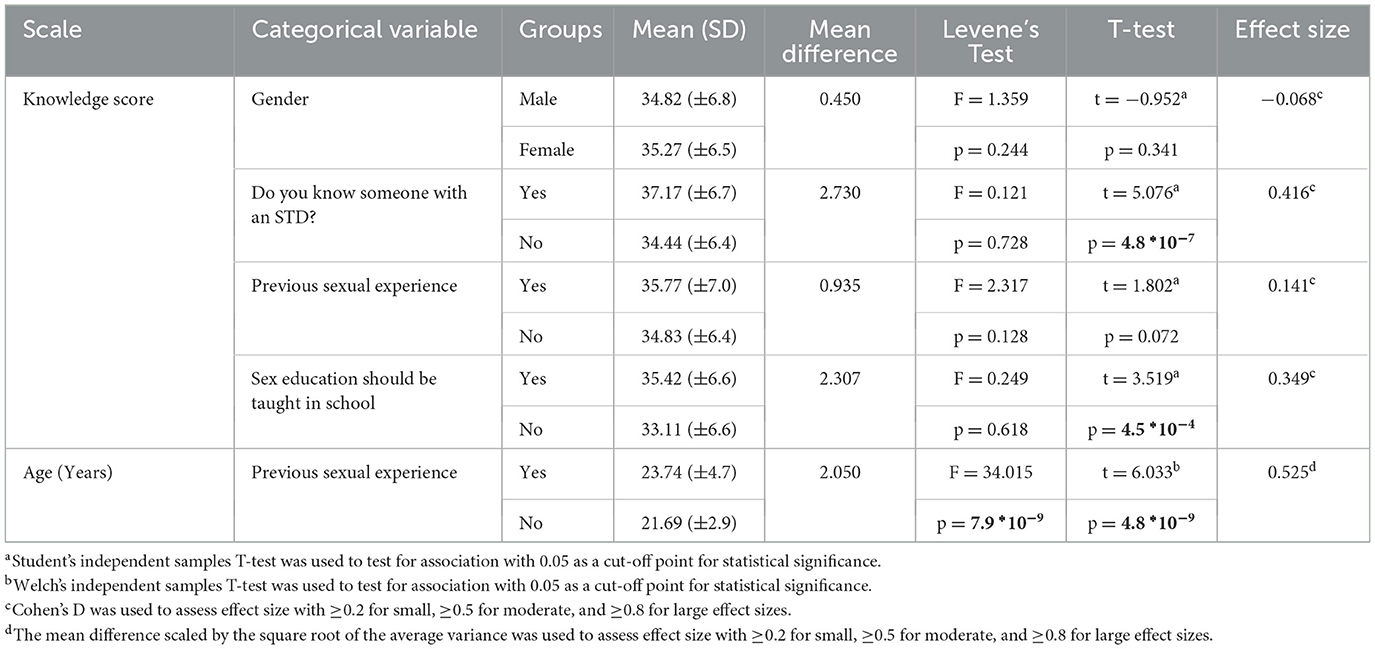- 1College of Medicine, University of Baghdad, Baghdad, Iraq
- 2Department of Community and Family Medicine, College of Medicine, University of Baghdad, Baghdad, Iraq
by Al-Gburi, G., Al-Shakarchi, A., Al-Dabagh, J. D., and Lami, F. (2023). Front. Public Health 11:1017300. doi: 10.3389/fpubh.2023.1017300
In the published article, there was an error. The proportion of participants who believed that HIV could be completely cured was reported as 32.9% in the text instead of the correct figure of 23.9%, which could be derived from Table 2. A correction has been made to [Results], [Knowledge of sexually transmitted infections]. This sentence previously stated:
“These include: the availability of HIV vaccination (standing at 42% incorrect response rate), the non-curability of HIV infections (32.9%), …”
The corrected sentence appears below:
“These include: the availability of HIV vaccination (standing at 42% incorrect response rate), the non-curability of HIV infections (23.9%), …”
In the published article, there was an error. The proportion of participants who believed that HIV is a non-curable infection was reported as 67.1% in the text instead of 76.1%, which could be derived from Table 2.
A correction has been made to the [Discussion], Paragraph 3. This sentence previously stated:
“As for other HIV items, only 58% of respondents correctly identified the unavailability of a vaccine, and 67.1% correctly identified HIV as a non-curable infection.”
The corrected sentence appears below:
“As for other HIV items, only 58% of respondents correctly identified the unavailability of a vaccine, and 76.1% correctly identified HIV as a non-curable infection.”
In the published article, there was an error in Table 2 as published. The “c” superscript denoting “No” as the correct answer was not placed for two items: “Showering before and after sex” and “contraceptive pill”. The corrected Table 2 and its caption appear below.
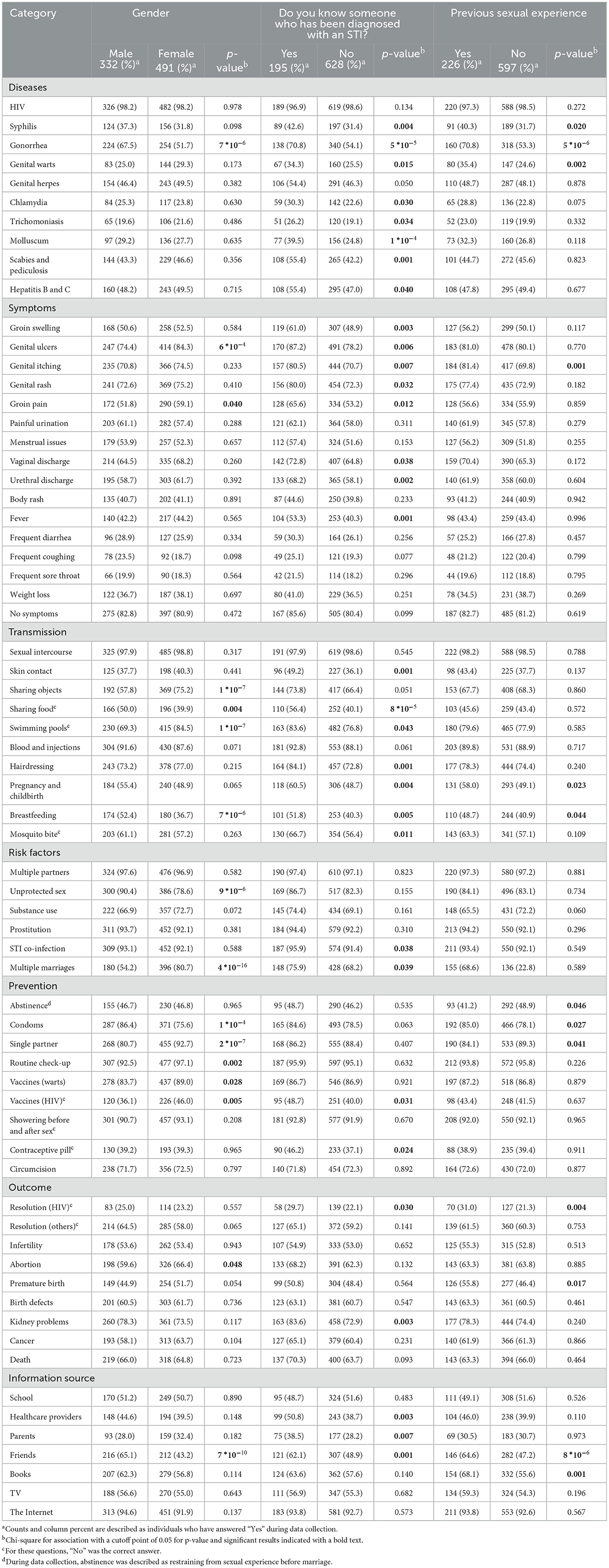
Table 2. Knowledge about sexually transmitted infections among non-medical undergraduates in Baghdad, Iraq.
In the published article, there was missing information. Effect size indices were not reported for Tables B1, C2, D1. This information is now included in Supplementary Table 1. For cases where equality of variance could be assumed, based on Levene's test, the Cohen's D index is reported. Alternatively, the mean difference was scaled by the square root of the average variance (instead of the pooled variance) as a more accurate indicator of the effect size (1). For both indices, a value of ≥0.2 signifies a small effect, ≥0.5 signifies a moderate effect, and ≥0.8 for a large effect.
In the published article, in Tables 2–4, a large number of hypothesis testing was performed simultaneously to test the association between each item and the three independent variables (gender, knowing someone who has been diagnosed with a sexually transmitted infection, and previous sexual experience). To further strengthen statistical reporting, the Benjamin-Hochberg procedure could be utilized to adjust p-values for multiple testing and reduce the false discovery rate to 5% within each family of hypothesis tests (within each independent variable) (2). This information is now provided in Supplementary Tables 2–4, which also include the odds ratio as an index of effect size to improve the interpretability of the statistically significant associations.
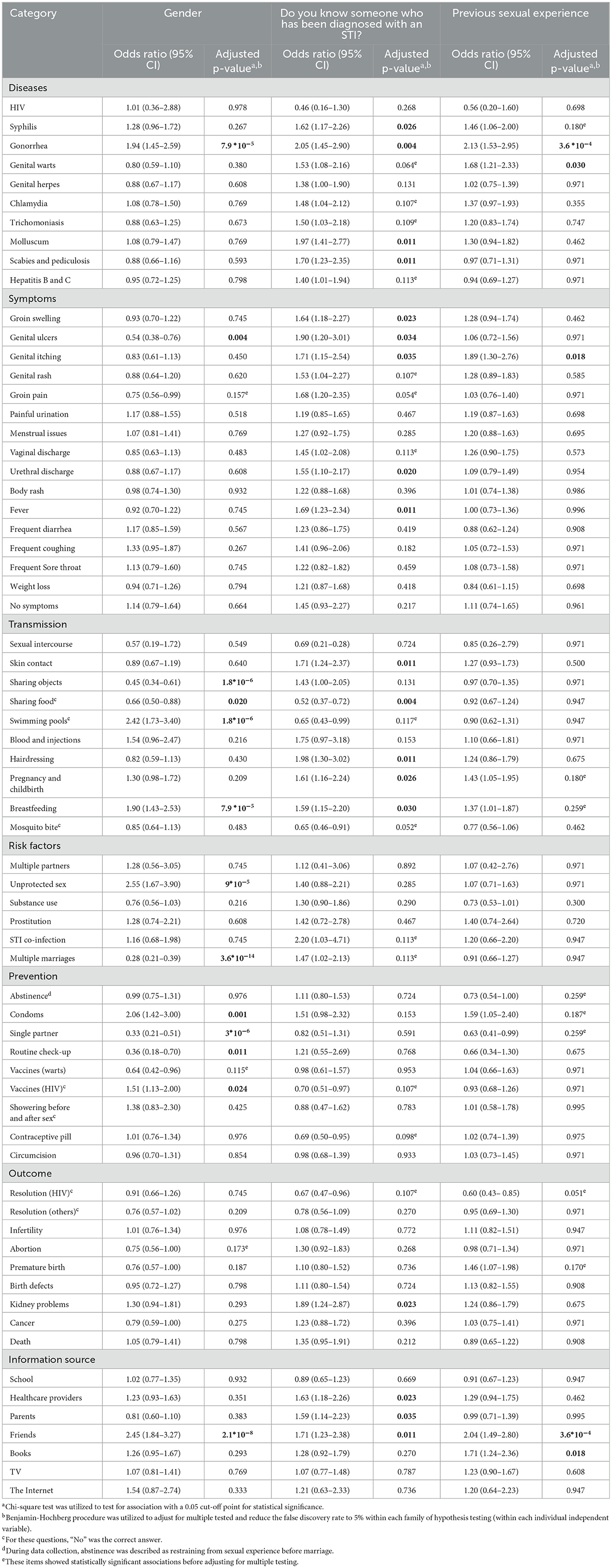
Supplementary Table 2. Odds ratios and adjusted p-values for the knowledge about sexually transmitted infections among non-medical undergraduates in Baghdad, Iraq.
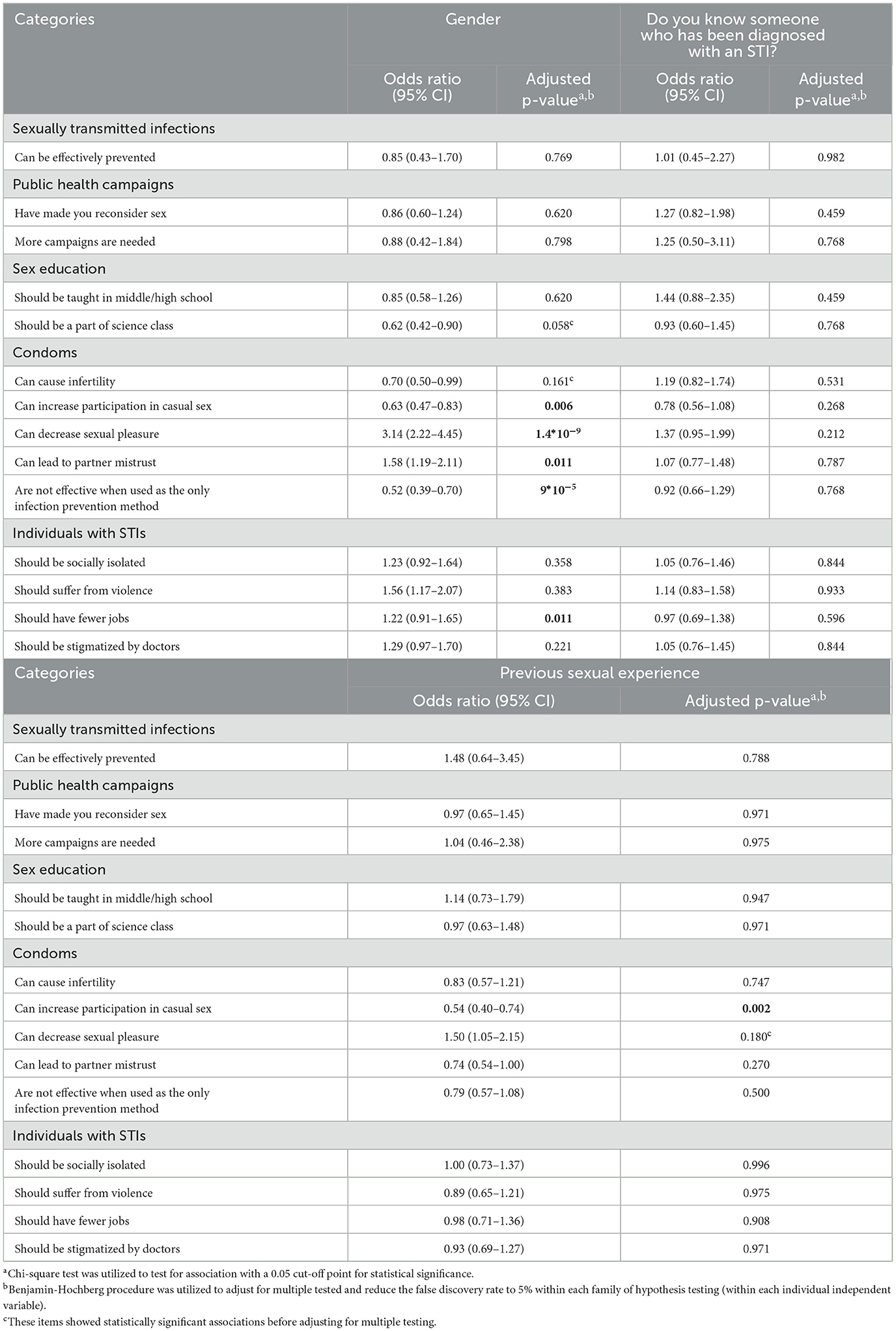
Supplementary Table 3. Odds ratios and adjusted p-values for attitudes toward sexually transmitted infections, their prevention, and infected individuals among non-medical undergraduates in Baghdad, Iraq.
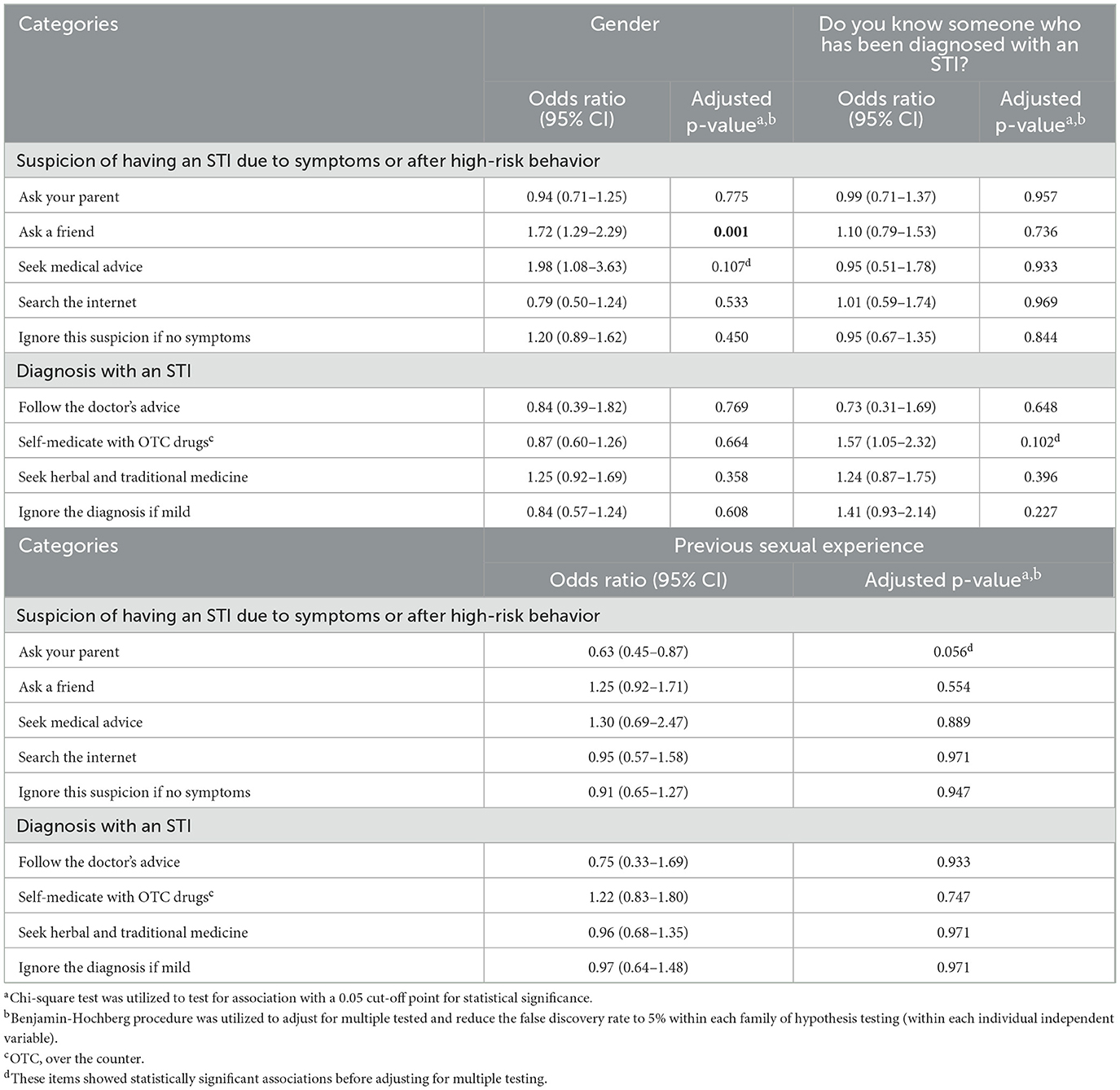
Supplementary Table 4. Odds ratios and adjusted p-values for practices upon suspicion or diagnosis with a sexually transmitted infection among non-medical undergraduates in Baghdad, Iraq.
These supplementary analyses may not change the scientific conclusions of the study. However, they identify areas where more caution should be employed when discussing certain significant associations. Namely, the higher knowledge of the genital warts' vaccine and the lower institutional stigma among female students, as well as the higher tendency for self-medication with over-the-counter drugs among those who knew someone with a sexually transmitted infection. Future studies should place higher emphasis on investigating these associations in depth, as they cannot be established with certainty based on these adjustments.
The authors apologize for this error and state that this does not change the scientific conclusions of the article in any way. The original article has been updated.
Publisher's note
All claims expressed in this article are solely those of the authors and do not necessarily represent those of their affiliated organizations, or those of the publisher, the editors and the reviewers. Any product that may be evaluated in this article, or claim that may be made by its manufacturer, is not guaranteed or endorsed by the publisher.
References
1. Aoki S. Effect sizes of the differences between means without assuming variance equality and between a mean and a constant. Heliyon. (2020) 6:e03306. doi: 10.1016/j.heliyon.2020.e03306
Keywords: sexually transmitted infections, sex education, Middle East, Iraq, Baghdad
Citation: Al-Gburi G, Al-Shakarchi A, Al-Dabagh JD and Lami F (2025) Corrigendum: Assessing knowledge, attitudes, and practices toward sexually transmitted infections among Baghdad undergraduate students for research-guided sexual health education. Front. Public Health 13:1617766. doi: 10.3389/fpubh.2025.1617766
Received: 24 April 2025; Accepted: 23 May 2025;
Published: 24 June 2025.
Edited and reviewed by: Christiane Stock, Charité – Universitätsmedizin Berlin, corporate member of Freie Universität Berlin and Humboldt-Universität zu Berlin, Germany
Copyright © 2025 Al-Gburi, Al-Shakarchi, Al-Dabagh and Lami. This is an open-access article distributed under the terms of the Creative Commons Attribution License (CC BY). The use, distribution or reproduction in other forums is permitted, provided the original author(s) and the copyright owner(s) are credited and that the original publication in this journal is cited, in accordance with accepted academic practice. No use, distribution or reproduction is permitted which does not comply with these terms.
*Correspondence: Ghaith Al-Gburi, R2hhaXRoLkFsaS5LaGFsZWVsQGdtYWlsLmNvbQ==
†These authors share first authorship
 Ghaith Al-Gburi
Ghaith Al-Gburi Ali Al-Shakarchi
Ali Al-Shakarchi Jaafar D. Al-Dabagh
Jaafar D. Al-Dabagh Faris Lami
Faris Lami